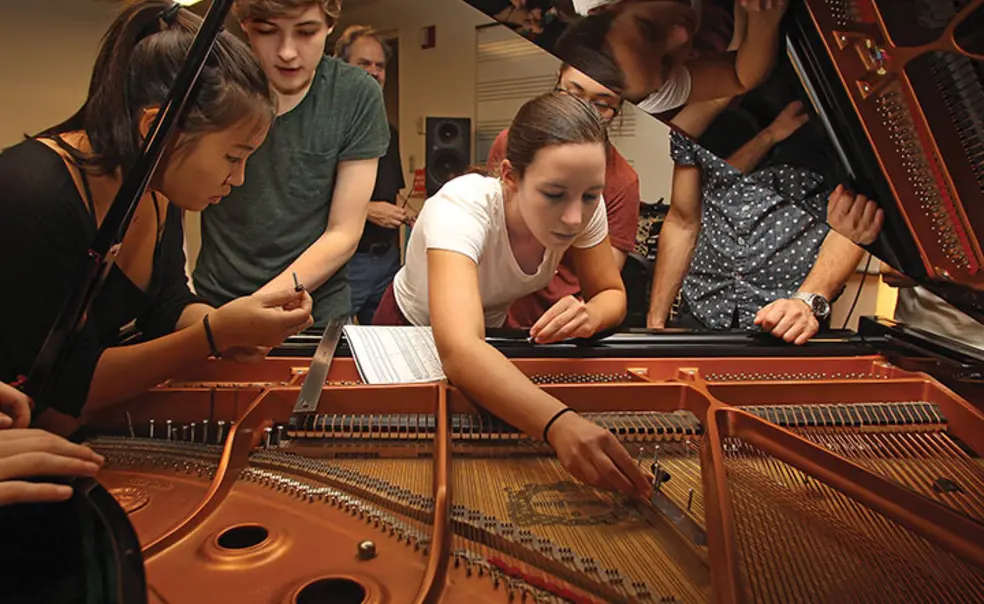Teacher: Music professor Dan Trueman
Focus: Students are studying a mix of acoustic and digital pianos and considering how musicians could reinvent or change instruments to create new sounds and ways of playing those instruments.
Background: This new course is being offered simultaneously at Princeton and on the online platform Kadenze. Trueman, a fiddler and composer, came up with the idea after altering the tuning and sound of some of his own instruments. He was particularly intrigued by the “prepared piano,” whose sound is altered by inserting objects like erasers or bolts between the strings to produce an unusual tonal effect.
Trueman also has developed software to create a prepared digital piano, which he calls bitKlavier. Algorithms allow musicians to manipulate the instrument in abstract ways. “Maybe you play a chord and a metronome will start, or maybe you play a note and then it plays backward at you,” he said. “The player can tailor the sound in very specific ways.”
Required reading and listening: Hearing in Time by Justin London; Piano Notes by Charles Rosen ’48 *51; “Continuum” by György Ligeti; “Violin Sonata No. 1 in G Minor” by Johann Sebastian Bach
Who should take it: Students must be able to read music, and it’s recommended that they have experience playing an instrument.
Why Kadenze: While eight students are enrolled on campus, more than 1,000 signed up to take the course online. All are given the same assignments, which include posting and responding to comments to a shared online forum.
“Princeton students are getting new perspectives and ideas from the online students,” Trueman said. “Some of [the content] can get pretty nerdy into math and ratios, so having a platform like Kadenze where you can explore the technical things and also post audio or video recordings makes a lot of sense.”
What he hopes students take away: “I hope it inspires them to think really creatively about how they can be musical,” Trueman said.












No responses yet